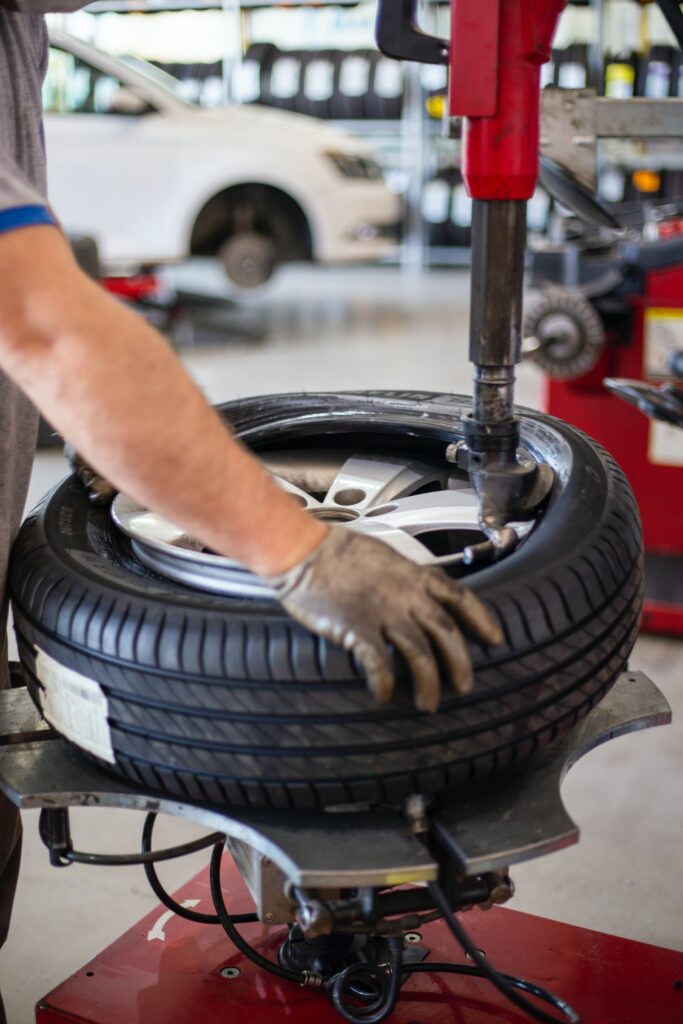When tyres are brand new, they have a tread depth of 8mm. But at what point does the tread start to become unsafe? And, how can you spot the signs that it’s time to replace your tyre? Let’s take a look.
What is the legal tread depth in the UK?
Legal minimum tread depth depends on the type of vehicle you drive. For cars, trailers, caravans, and goods vehicles (essentially, vehicles under 3,500kg), the minimum legal tread depth is 1.6mm. You must be able to measure 1.6mm along a continuous band that runs the entire circumference of the tyre, in the central three quarters of the tyre.
Below 1.6mm, the tyre is known as ‘bald’. If you drive with bald tyres, you can face a fine of up to £2,500 and three points on your licence per tyre, and it can also invalidate your insurance. You can face the same consequences if your tyre has any bulging, tears, or cracks, is not inflated to manufacturer guidelines, and if the cord or ply is visible.
In other words, if all four tyres are found to be illegal, you can be fined £10,000 and potentially even lose your licence.
When are tyres unsafe?
Despite the legal minimum tread depth being as little as 1.6mm, it is highly recommended that you get new tyres once your tread depth goes below 3mm. This is because your tread depth can significantly affect your braking distance.
The tread of the tyres channels water away from the tyres, allowing them better grip on the road. Thus, the lower the tread depth, the less grip the vehicle will have, and the longer it will take for the car to stop.
In fact, one study found that when tyres reach 1.6mm tread depth in wet weather conditions, stopping distance increases by 36% on asphalt and 44.6% on concrete, showing that tread depth can be the difference between an accident or coming to a stop just in the nick of time.
In addition, bald tyres are much more likely to be punctured. Though merely an inconvenience when travelling at slow speeds or parking, getting a puncture at high speeds can be catastrophic.
How to test your tread depth
- 20p check
Grab a 20p from your wallet – the outer border of the coin is roughly 1.6mm in depth. Place the 20p coin into the grooves of your tyre. If you can see the border of the coin, your tyres are likely reaching their minimum tread depth. If the border of the coin is hidden, however, your tread depth is still acceptable.
Remember to test the tyre in multiple spots along the tyre to get a better idea of your overall tread depth, as different areas of tyres will naturally wear at differing rates.
- Tread depth gauge
These tools are exactly what they sound like – they measure the depth of a given groove in your tyre. Tread depth gauges come in many different forms – the most popular being digital gadgets or little cards.
The cards will have a coloured section, which can be used to measure tread in the same way to a 20p coin. On the other hand, a digital gauge is quicker and more accurate, as you line it up over the groove in question, and get a measurement in seconds.
- Tread wear indicators
Tread wear indicators are purposefully moulded into the grooves of the tread. Simply have a look to see if you can spot them. If the tyres and the tread wear indicators are level, this means your tyres have worn below the legal limit.
Perhaps the easiest and most efficient way to tell if the tread on your tyres is unsafe is to take your car into your local garage for regular tyre checks. Find a reputable, trustworthy garage in your area – for example, in Essex and around the Dartford Crossing, look for car tyres in Grays & Thurrock. This way you can rest assured that the mechanics will give you accurate tread depth measurements and honest advice as to any potential replacements.
Even if your tyres are not at the legal minimum just yet, they can also advise you as to how long they might last until you do need to have them replaced, allowing you to budget more efficiently.
As a general rule of thumb, it is a good idea to test your tread depth regularly to prevent potential issues and ensure they are above the legal minimum. Particularly, testing before and after a long drive or harsh weather conditions is advised, as this is when tread depth will be even more important.






